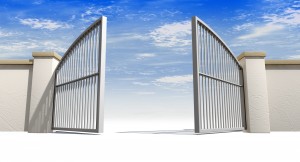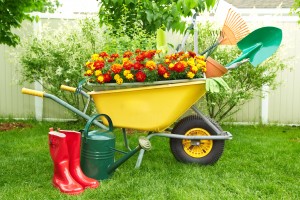Matthew 7:13, Enter the narrow gate. Here Yeshua speaks of the straight gate and the narrow way that leads to life versus the wide and broad gate that leads to destruction.
In Genesis 28:10–22, we have the account of Jacob’s dream of a ladder reaching into heaven. The dream greatly amazed Jacob and afterwards he concluded he had had a divine encounter. He named the spot where he had the dream Beth El meaning “House of El (God)” and concluded that this spot was “the gate of heaven” (verse 17).
In Hebraic thought, “the ladder” to heaven is equivalent to the Tree of Life, which is another term for the Torah of Elohim. We know that Yeshua was the Torah-Word of Elohim made flesh ( John 1:1,14). Not only that, Yeshua likened himself to a ladder reaching to heaven ( John 1:51).
Furthermore, we see both Moses and Joshua describing the Torah-law of Elohim as a (narrow, by implication) path from which one must turn neither to the left nor to the right (Deut 5:32; 17:11, 20; 28:14; Josh 1:7; 23:6).
In Proverbs, the path of wisdom (i.e., Torah) is also likened to a (narrow, by implication) path from which one must not turn either to the left or to the right (Prov 4:27). The term “gate” (or door) itself in Matthew 7:13 is a Hebraism referring to the means by which one enters into the Tabernacle or Temple of Elohim (Exod 27:14, 16; 32: 35:17; Ezek 40:3, 6, 7, 8, 9, 10, 11, 13 etc.).
The Tabernacle (or Mishkan) of Moses was representative of the pathway to redemption or salvation. Before actually entering the tabernacle, one encountered the altar of the red heifer, which pictures the cross of Yeshua. To enter the tabernacle, one passed Continue reading



